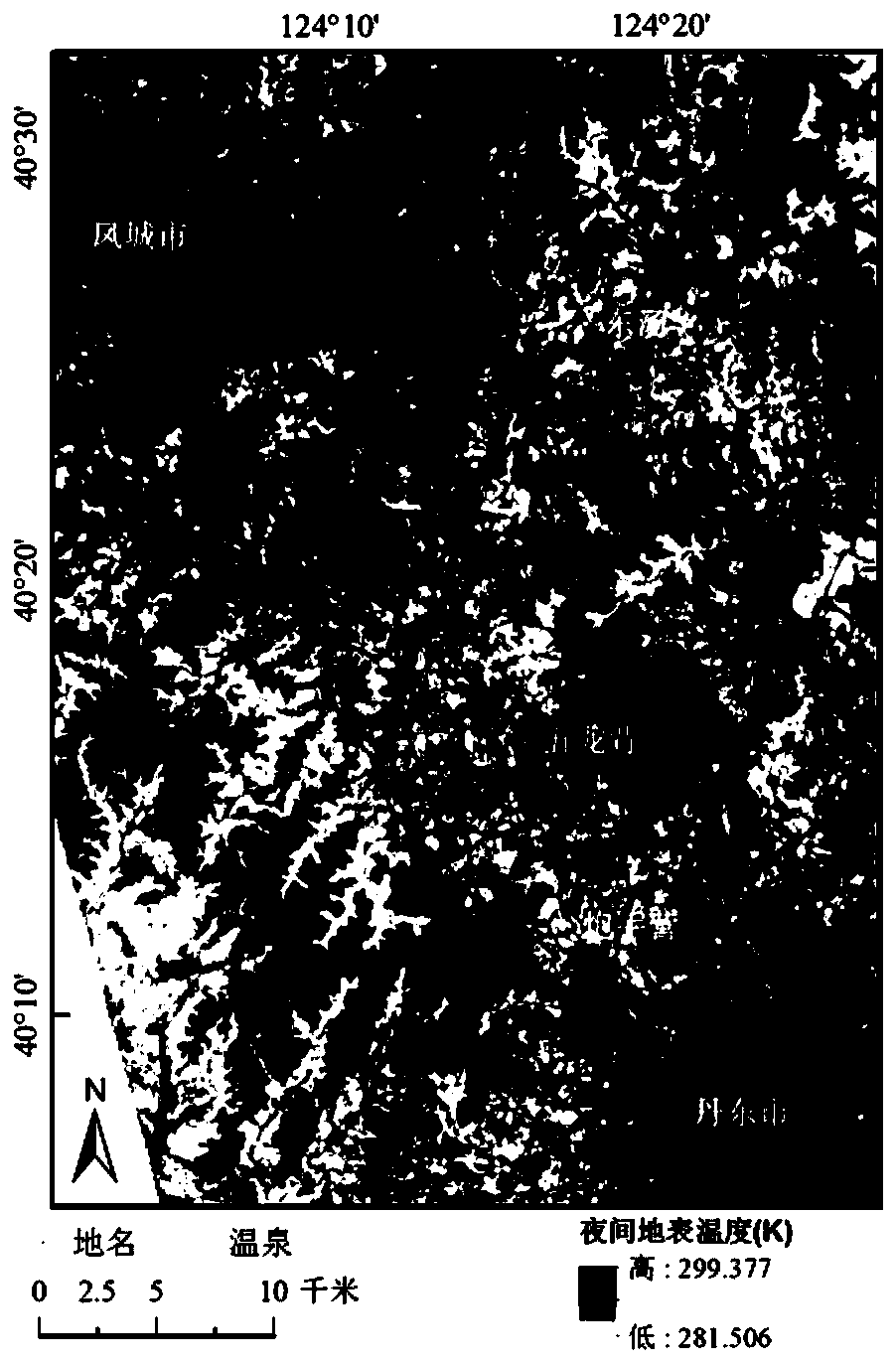Method for delineating geothermal anomalies by using daytime and nighttime thermal infrared remote sensing
A technology of thermal infrared remote sensing and thermal infrared remote sensing, which is applied in the fields of remote sensing geology and thermal infrared remote sensing, can solve the problems of interfering with the determination of geothermal anomalies, difficulty in eliminating relative cold and hot anomalies of temperature, and small spatial resolution, etc., to achieve the elimination of relative cold and heat anomalies Effect
- Summary
- Abstract
- Description
- Claims
- Application Information
AI Technical Summary
Problems solved by technology
Method used
Image
Examples
Embodiment Construction
[0020] The invention will be further described below in conjunction with the accompanying drawings and specific implementation examples. The present invention proposes a method for using day and night thermal infrared remote sensing to delineate geothermal anomalies, such as figure 1 As shown, the specific steps are as follows:
[0021] Step 1: Collect Landsat 8 daytime data and ASTER nighttime data that cross the border on the same day, and the cloud coverage of the collected data should be less than 10%;
[0022] In order to eliminate the influence of rainfall on the surface temperature, it is necessary to ensure that there is no rainfall on the day when the satellite transits. If it is difficult to select the satellite data that transits on the same day, the thermal infrared data with similar time, similar temperature and no rainfall in the transit time interval of the two satellites is preferred. In this embodiment, the thermal infrared data of Landsat 8 at 10:22:11 on May...
PUM
 Login to View More
Login to View More Abstract
Description
Claims
Application Information
 Login to View More
Login to View More - R&D
- Intellectual Property
- Life Sciences
- Materials
- Tech Scout
- Unparalleled Data Quality
- Higher Quality Content
- 60% Fewer Hallucinations
Browse by: Latest US Patents, China's latest patents, Technical Efficacy Thesaurus, Application Domain, Technology Topic, Popular Technical Reports.
© 2025 PatSnap. All rights reserved.Legal|Privacy policy|Modern Slavery Act Transparency Statement|Sitemap|About US| Contact US: help@patsnap.com



